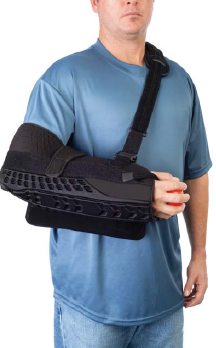Shoulder replacement surgery is a challenging procedure. It is one in which doctors work to replace the damaged ends of the humerus in the upper arm and the scapula or shoulder bone. Sometimes the procedure requires the doctor to cap them with metal or plastic lined artificial surfaces. Cement is sometimes used to hold the components of the shoulder joint in place. At other times, material which allows the growth of new bone over time to hold the components in place without the use of cement is used.
The shoulder is a ball and socket joint. Muscles and ligaments hold the ball shaped upper arm bone in the cup-shaped socket of the shoulder bone. Usually surgeons use a long piece of metal with a rounded head as a replacement for the ball at the top of the arm bone. If there is damage to the socket of the shoulder bone, the surgeon smoothens it out and uses a piece made of plastic or plastic and metal to cap it.

These days several surgeons are opting to use a procedure called reverse total shoulder replacement if the shoulder muscles are damaged and the patient has painful arthritis. In this new procedure, the surgeon uses a cup-shaped piece to replace the damaged socket joint after removing the damaged bone and smoothing out the ends. There are encouraging early results using this procedure. However, it does not work for everyone and the procedure is not used by all surgeons. Success with reverse shoulder replacement requires a skilled, experienced surgeon and careful evaluation of the problem.
Doctors use local or general anesthesia during joint replacement surgeries. The type of anesthesia they use depends on the health of the patient and the preference of the doctor and the patient. To reduce the chances of infection, doctors often recommend patients take antibiotics both before and after the shoulder surgery. Patients that need major dental work are often told to do it before the shoulder surgery to reduce the risk of an infection spreading to the repaired shoulder. That can cause a major problem.
Patients are given antibiotics intravenously for about 24 hours after the surgery. Pain medication and medicines used to prevent blood clots are also administered. The patient usually has a drain and a compression sleeve in the affected area after surgery to improve circulation, remove excess fluid and prevent blood clots. A day or two after the surgery, a physical therapist may begin doing gentle passive motion treatment on the affected arm. The medication and treatment will continue for several weeks after the surgery. Immediate rehabilitative treatment is vital for proper healing.
Most people go home 1 to 3 days after the surgery. But the surgical site must be monitored closely and the doctor must be told if there is redness or drainage or a fever develops. Physical therapy will help speed recovery. Rehab generally takes several months. The patient must avoid repetitive arm activities and heavy lifting for about 6 months after the surgery. Patients usually continue to take antibiotics for two years after shoulder surgery.
Joint replacement surgery is usually recommended when there is severe shoulder pain as well as loss of function and neither medicines nor other treatments offer relief. The doctor decides if the patient is a good candidate for shoulder surgery based on their age, overall health, risk for infection and amount of damage to the bones and muscles in the shoulder. While the surgery will not completely return normal function, it can help many people to do most of their normal activities without pain.













